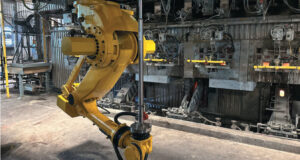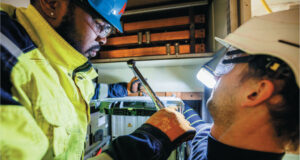Implementation of better maintenance practices can typically yield improved safety and 1-5 percent increased quality production throughput, followed by 10-20 percent lower costs for maintenance. This is achievable within 2-7 years in many companies, so why do some fail to generate these results?
Improving manufacturing reliability, safety, and maintenance costs can only be achieved through people. So, a long-term strategy coupled with a tactical implementation plan and engaged, visible leadership is a must.
In one of Idcon’s surveys, only 16.7 percent of respondents reported that their company had a strategy for their maintenance organization. The rest kept on changing improvement initiatives and seldom finished the ones they started before another one was initiated. One common example is that cost savings almost entirely focus on visible costs, while waste built into the day-to-day work system is overlooked.
It is not uncommon that operations and maintenance shutdown schedules are wide open until the morning of the shutdown. Someone can, without approval, add a job to a maintenance shutdown on short notice. This can easily delay expected start-up for several hours, costing US$40,000 or more. The same person might require several approvals to buy a tool for US$900!
INSIDE A SHUTDOWN
Some time ago, we reviewed a shutdown performance over a period of time. The mill estimated ahead of time that a shutdown of a particular area would take 10 hours for completion. The first step to cut costs was to reduce the shutdown to eight hours, which postponed some of the work. This was done so that visible costs could be avoided by not bringing in more contractors to complete all the work. Someone suggested “Maybe we can run the three rotary steam joints until the next shutdown because they aren’t leaking yet. We know the carbon rings in the joints are at about 1/8” thickness, but let’s risk it.” So, those jobs were cancelled along with other work deemed not to be urgent.
During the shutdown, the operations manager added three overlooked jobs that had not been on the maintenance schedule before shutdown. This delayed the start-up by three hours. One of the forgotten jobs was that the coupling for one dryer section drive needed to be replaced. After pulling the coupling off of the shaft, it turned out that the coupling had not been requested from stores and, when it was finally found, it was not prepared for the correct shaft diameter and the keyway did not fit. This was one of the final jobs, so no time was allotted to prepare the coupling properly. In the end, the old coupling was put back and welded together to be fixed later.
During the start-up, the steam system was started too quickly resulting in too much condensate in the pipes, causing water hammer. As a result, two of the three carbon rings in the rotary steam joints cracked and started leaking. Shutting them off would cause a 10 percent slowdown of production speed. Additionally, the cost of repairing the joints was raised by 10x because of the damaged seal surfaces. The coupling made it through the shutdown, but its condition was forgotten.
Three months and three shutdowns later, the bearings in both the motor and the gearbox failed. The welded coupling was stiff and misaligned. Overall, these issues resulted in six hours of unscheduled lost production and, of course, additional maintenance costs.
ROOT CAUSES
There were myriad root causes for the incidents presented here: a lack of work prioritization and planning, insufficient closing time for shutdown schedules, the easy addition of break-in work during shutdowns, etc. However, because this organization has always been run in that manner, the waste is already known and accepted.
Fixing that problem will take time because cultural changes take time. A common attitude in this organization is putting off work for later to save money in the short term, instead of using money to improve the work system for the long term. This reveals an attitude that it is better to embed the existing waste into the work system, therefore making the cost invisible, as opposed to creating visible cost by taking the time to improve the system.
So, instead of improving and saving waste in the long term, the visible short-term cost saving initiatives take over. These can include cancellation of training programs, reduction of the number of planners and supervisors, postponing necessary maintenance work, reduction of lubricators and delegation of this important task to operators without training, etc. In order for an organization to survive, costs cannot be too high—but it is too risky to count on an upswing in the market to offset the cost of short-term saving initiatives.
To prosper and survive, plants must make long-term improvement initiatives. The short-term savings will often worsen the situation within 3-5 years. Instead, a long-term cultural change initiative will improve performance substantially in 2-7 years.
 Paper 360
Paper 360

